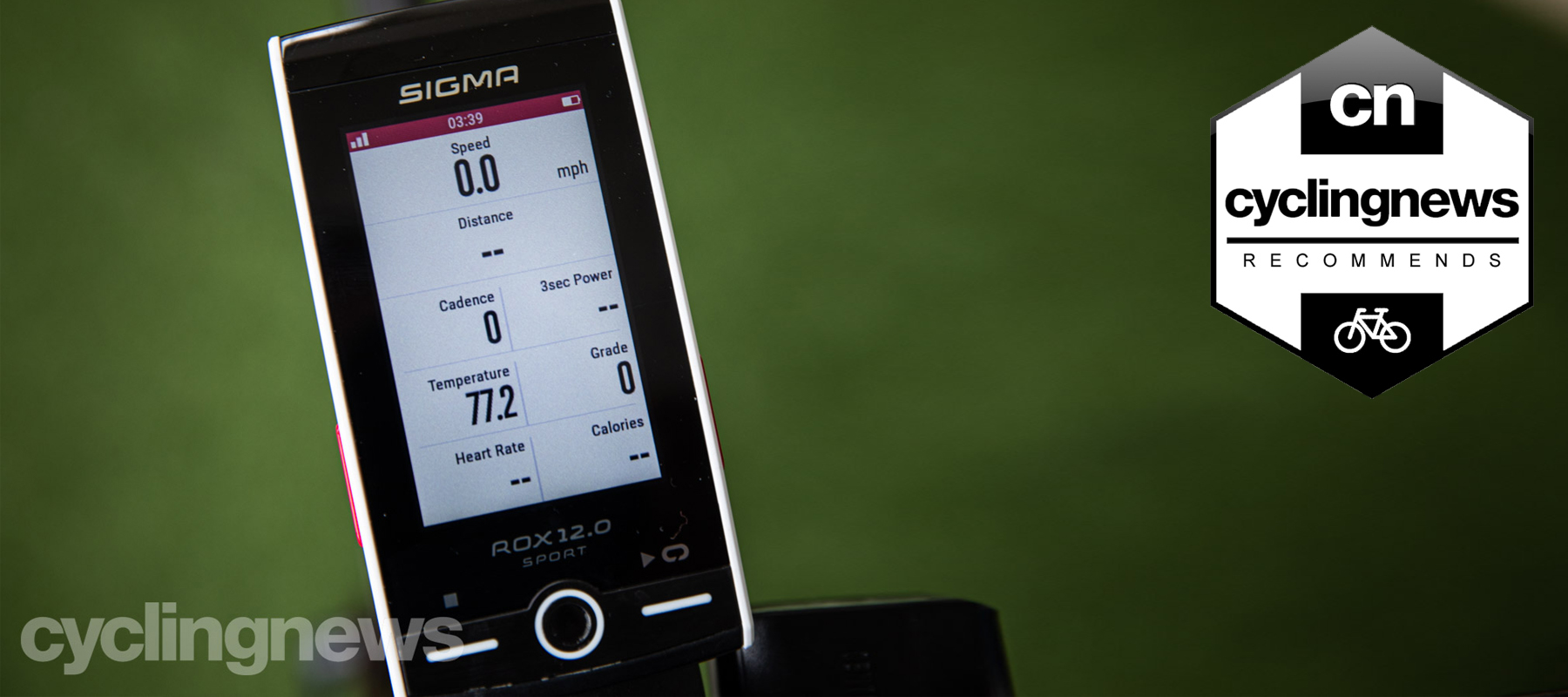Cyclingnews Verdict
The best touch screen of any head unit we've used to date, the Sigma Rox 12 is the computer we'd pick for exploring new roads
Pros
- +
Screen detail and responsiveness
- +
Map drawing speed
- +
Reliability
Cons
- -
Closed off system
- -
Screen does not utilise available realestate
You can trust Cyclingnews
When I was a kid, I remember my dad wiring up an old Sigma computer to my bike. The little black box mounted on my bars showed current speed and distance, and I remember ripping around the neighbourhood trying to see how fast I could go down the hill at the end of my block.
The best cycling computers have come a long way since the late 1990s, and the Sigma Rox 12 is evidence of how powerful these little units have become. Sitting at the top of the German brand's range of GPS-enabled head units, the Rox 12 is a clear shot across the bow of its competitors, but should they be worried?
Designs and aesthetics
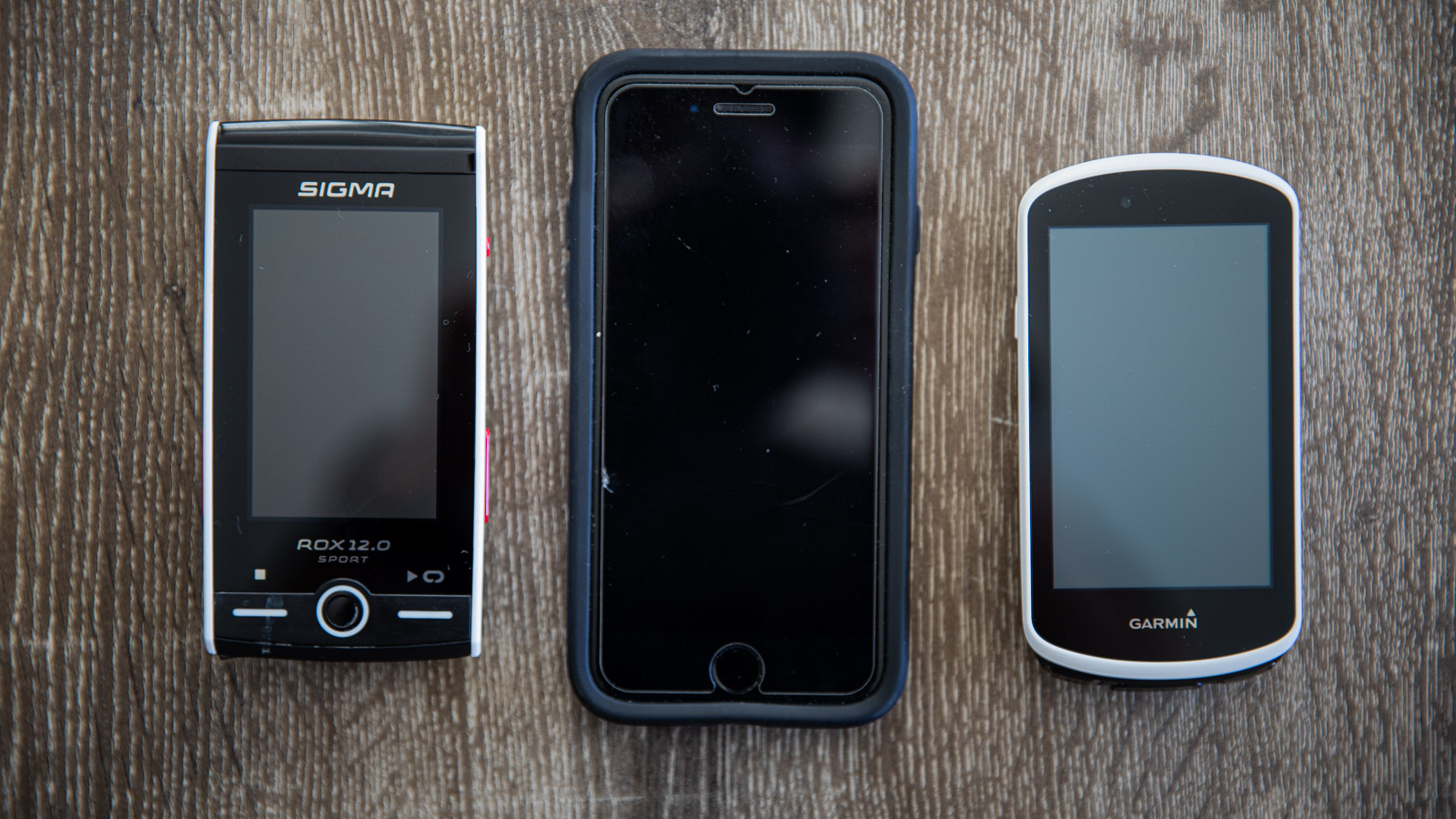
The first thing you will notice about the Sigma Rox 12 is its size, it's massive! Side by side, the computer has roughly the same footprint as the Garmin Edge 1030; however, the screen on the Rox 12 does not take full advantage of the available space.
While the display may not be quite as large as the flagship Garmin, it's brighter, sharper, higher contrast and the touch screen is noticeably more responsive, too — bordering on smartphone level. Better still, it's unimpeded by full finger gloves and doesn't freak out when there is rain on the screen.
Sigma has also added a start/lap button, stop button, smartphone-esque home button, and buttons on either side which cycle through the available screens — you can also swipe with your finger.
The computer mounts to your bike with a familiar quarter turn and comes in the box with a standard bar mount, as well as a pretty stylish BarFly out-front mount. The BarFly mount is sturdy and survived many a day mounted on the bars of an XC mountain bike without flopping or moving after a huck to flat. The mount also allows for a three-prong GoPro mount to be attached to the bottom for cameras and lights. While Sigma's mounting tabs are their own, they are close enough to those found on the back of a Garmin computer to use their mounts with no issue. I rode around for months on a Giant Propel, using the Garmin specific insert in the integrated mount with the Rox 12 clipped in with zero problems.
For the fashionistas out there, Sigma also offers aftermarket cases in three colours.
Riding experience
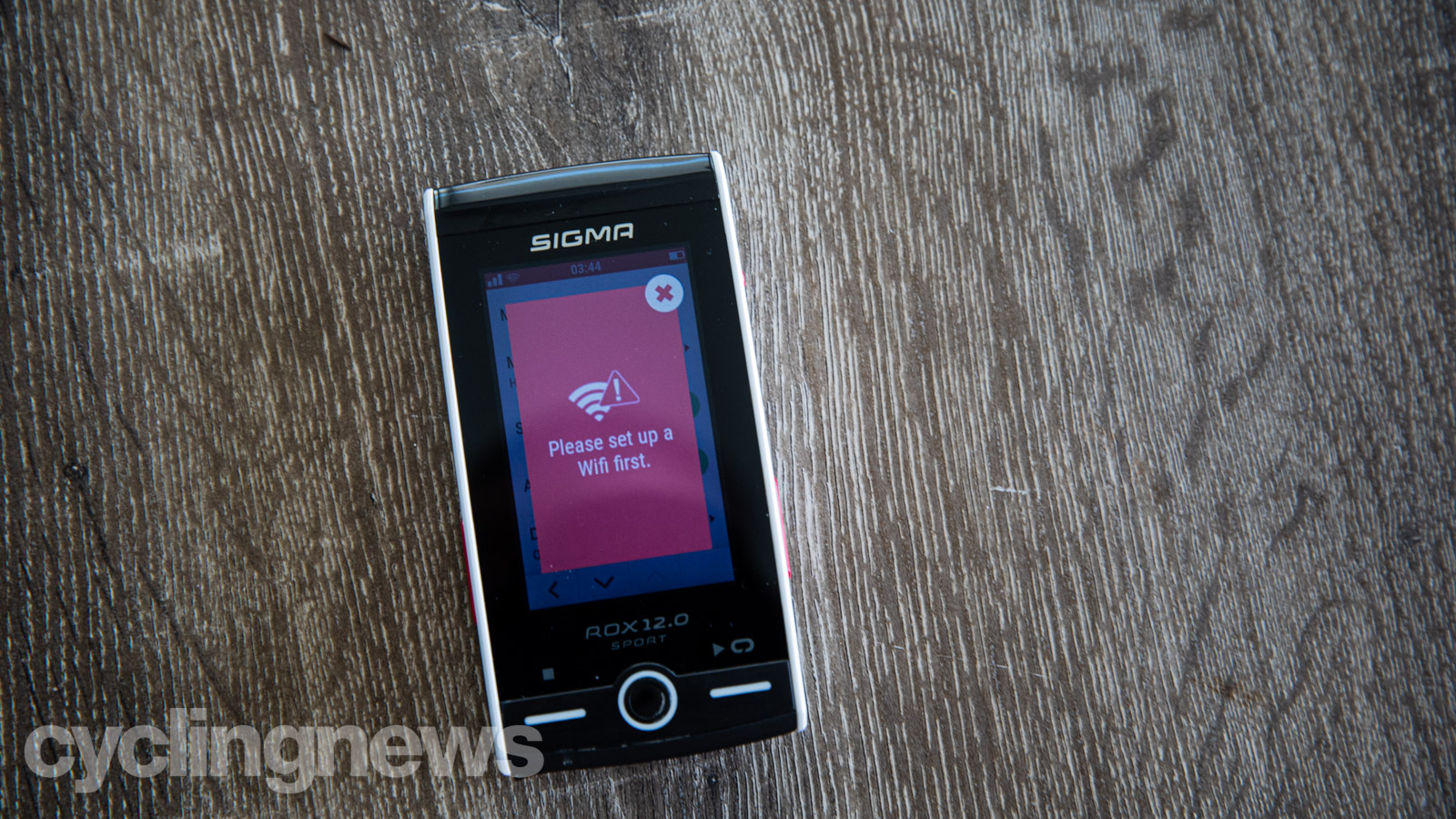
The Rox 12 runs on an Android platform and the UI functions similarly to the smartphone in your pocket. Being used to the menu structure of Garmin and Wahoo computers, there was a short learning curve, but everything is intuitive.
It's not quite as open as said phone and is only capable of running the native Sigma apps, Strava, Komoot, Training Peaks, Dropbox and a few others at the time of writing, and for the time being there is no way to add additional apps. The other caveat is that the Rox 12 can't actually talk to your phone.
The computer speaks both Bluetooth and ANT+, but they only facilitate connections to sensors. All of the data transfer takes place via a connection to your home WiFi network. In a pinch, you can hotspot the Rox 12 to your phone if you're desperate to upload a workout or need to download a route from Strava or Komoot, but that is the closest you will get to phone integration.
To be frank, the lack of smartphone integration was surprisingly refreshing when using the Rox 12. The only place I missed it was setting up the data screens. But even then, with the responsive touchscreen, the process was largely pain-free.
I have a love-hate relationship with smartphone notifications on computers, I find them really useful for screening calls out on a ride, but I could care less about emails or if @BikeGuy7384675 responded to my latest Instagram story. Not having the option was actually quite refreshing; I did miss a few important phone calls out riding but, I'd also argue that's half the point of going for a ride.
Better still, when you log into Strava, TrainingPeaks, etc through the computer, your rides will upload automatically when the head unit next connects to WiFi.
With up to six pages of data, the Rox 12 can record everything from your basic speed, time and distance to advanced metrics such as TSS, LR balance and even the advanced metrics from Rotor's 2INpowermeters. The computer connected instantly to a range of HR straps, a Stages single side power meter and Quark AXS meter; I didn't experience any dropouts or trouble with calibration during my testing period— more than can be said for the Edge 1030 and 830 I also have on test.
One notable omission from the connectable devices is smart trainers, but with the proliferation of training apps, it's probably not a feature that many people will miss. If you still run workouts from your head unit to your smart trainer, the Rox 12 is not the computer for you.
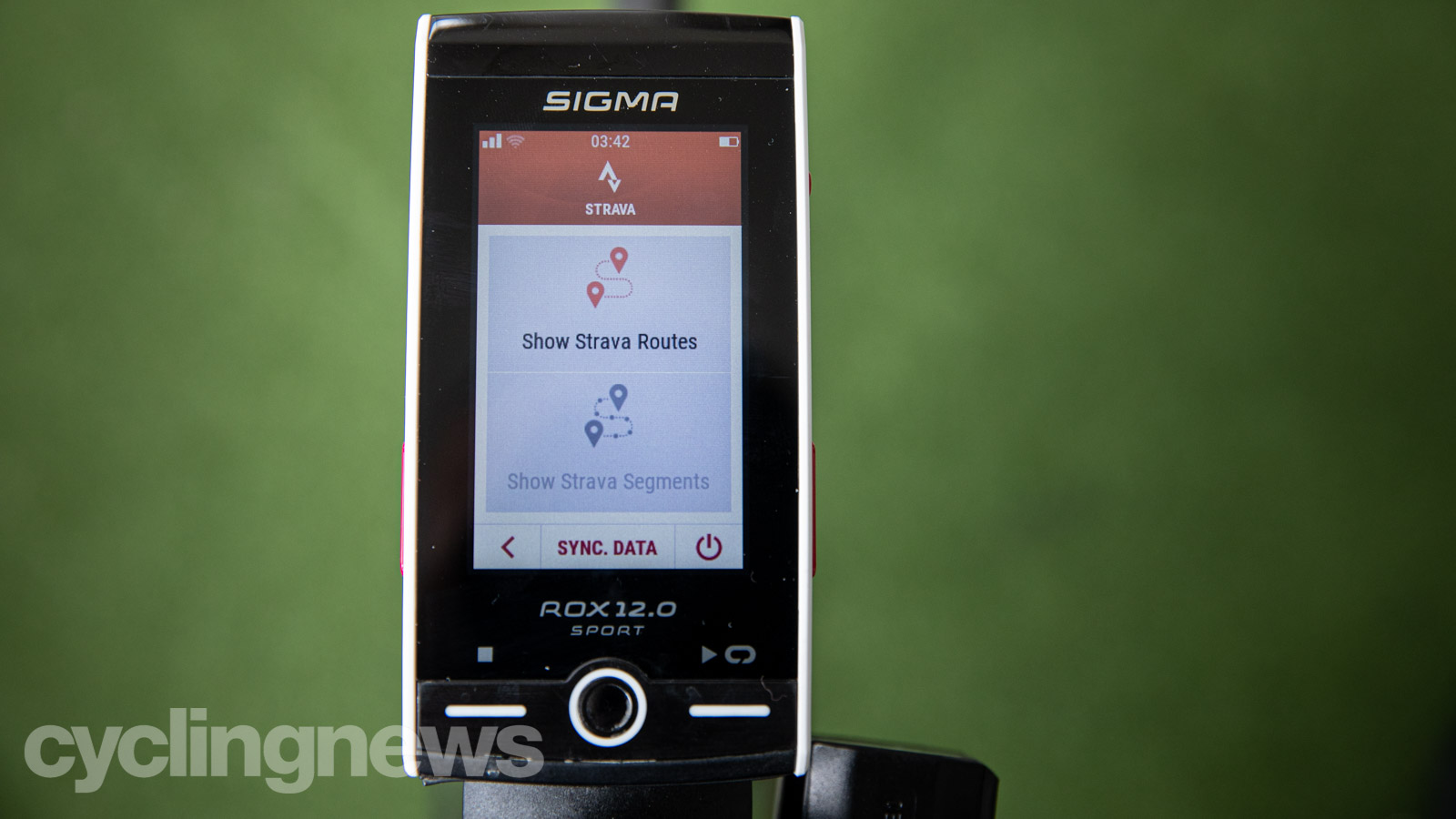
The Rox 12 allows you to define multiple sport profiles, which are more-or-less equivalent to definable 'bikes' on other head units — there are also profiles for running, hiking, golfing and skiing too. Here you can not only tell the computer what sensors to look for but set up different data screens, navigation preferences and the like.
There is a workout functionally too, however, the sessions must be built on the device itself or in the Sigma Data Centre desktop app. Even though TrainingPeaks has an app on the Rox 12, I wasn't able to send workouts directly to the computer or upload them to the desktop app.
While the Rox 12 is highly functional but not quite top of its class in terms of data and connectivity, the computer truly flexes its muscles is when it comes to navigation. The head unit comes with base maps for your region pre-installed, using the Open Street Maps, with the rest of the globe available for free download; all you need is a Wifi connection.
My test unit came straight from Sigma HQ in Germany, and initially, I did have some trouble accessing the maps for Australia. A couple of stray XML files in the maps folder seemed to be blocking my access to the downloads. The Sigma product team was aware of this issue and was able to guide me through what I needed to do and the brand tells us this has been addressed in a subsequent firmware update.
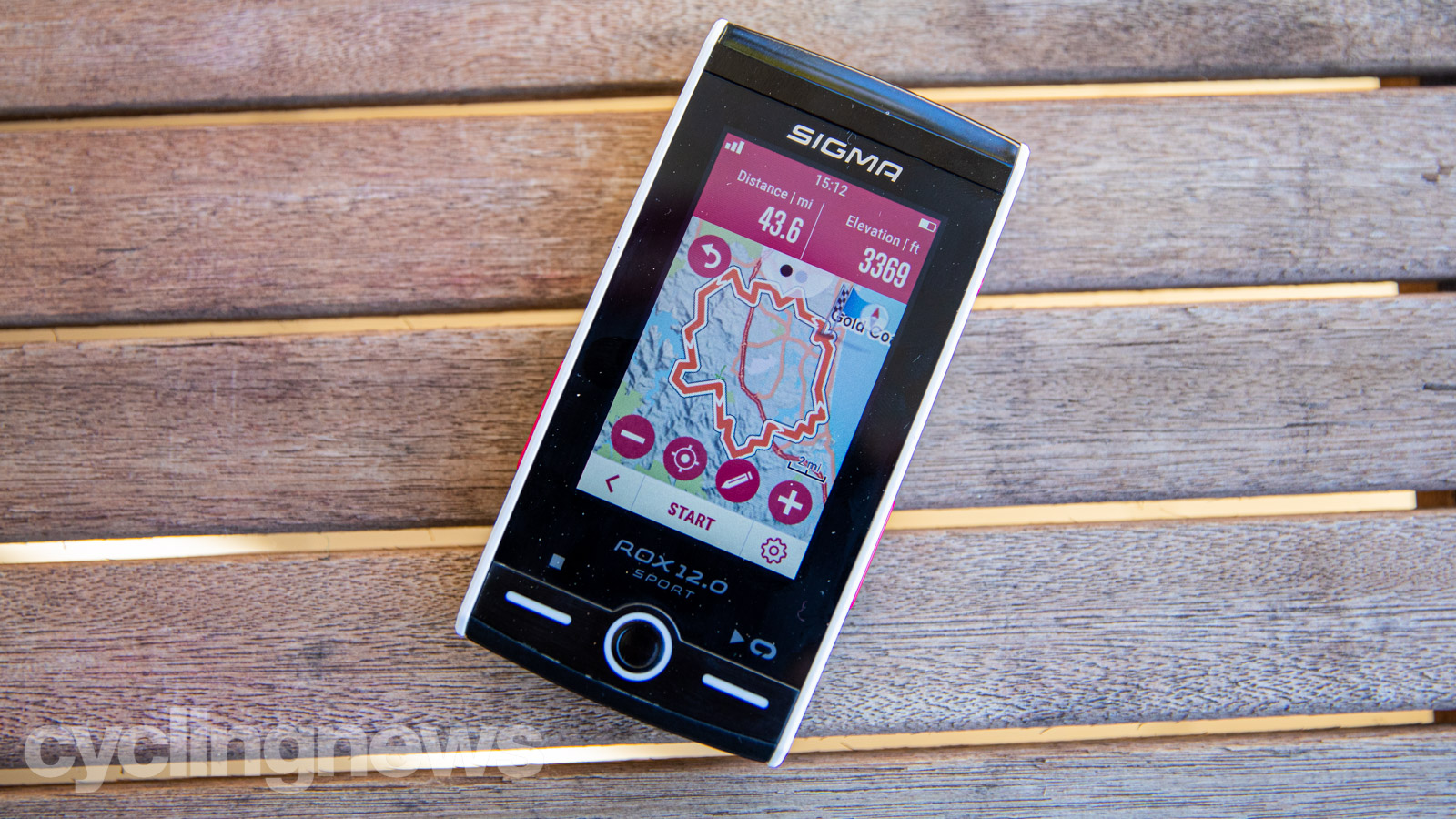
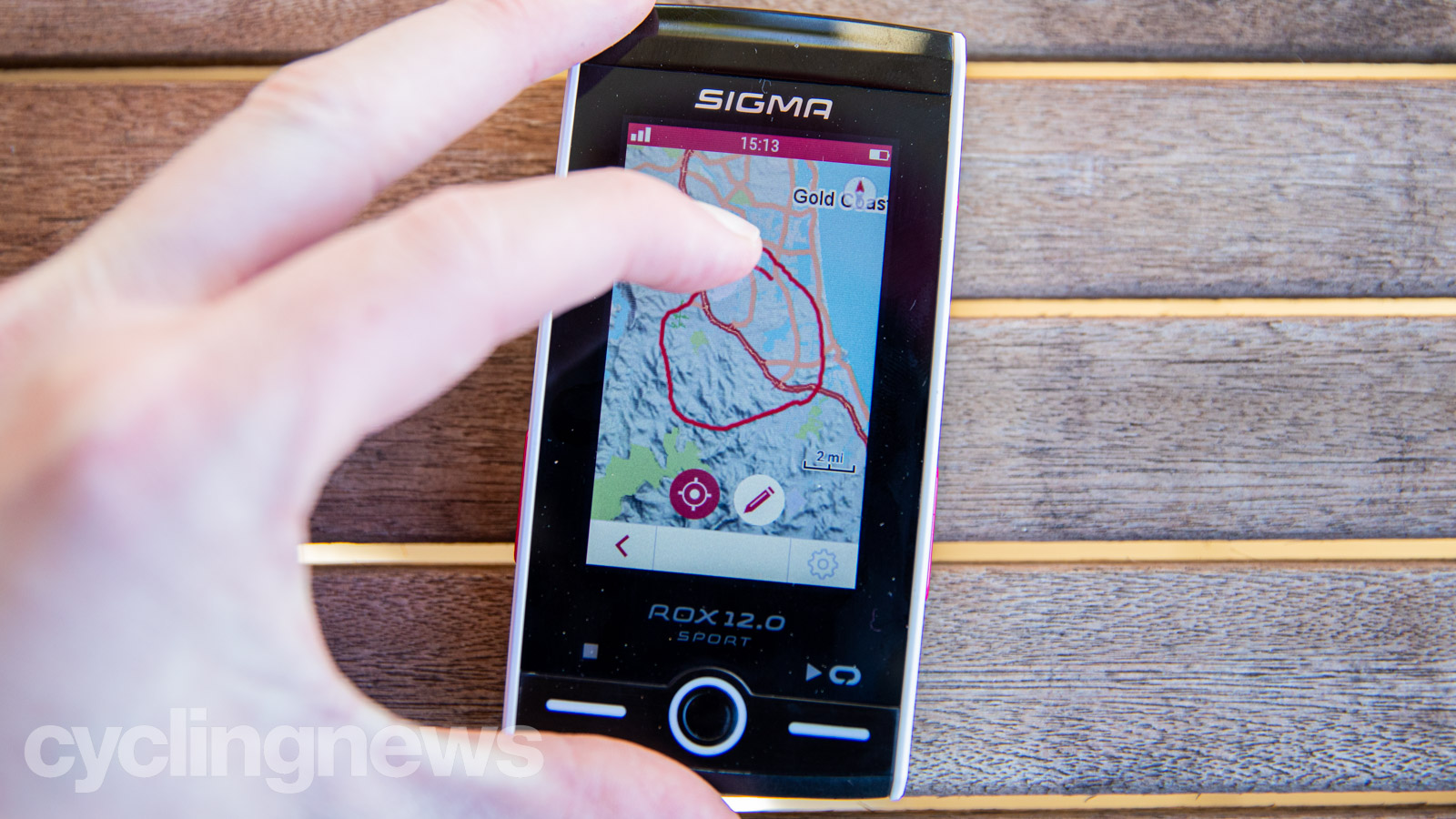
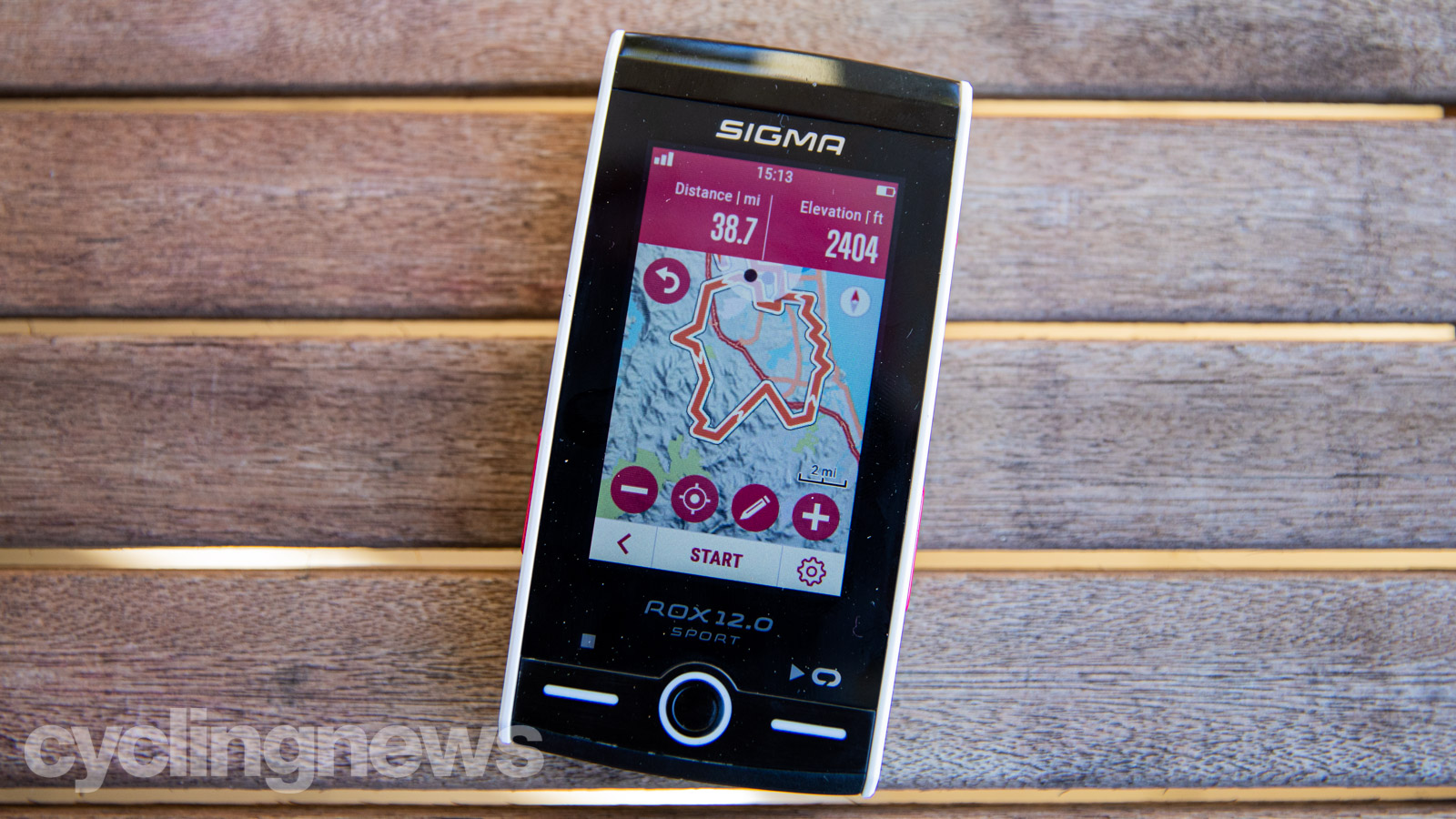
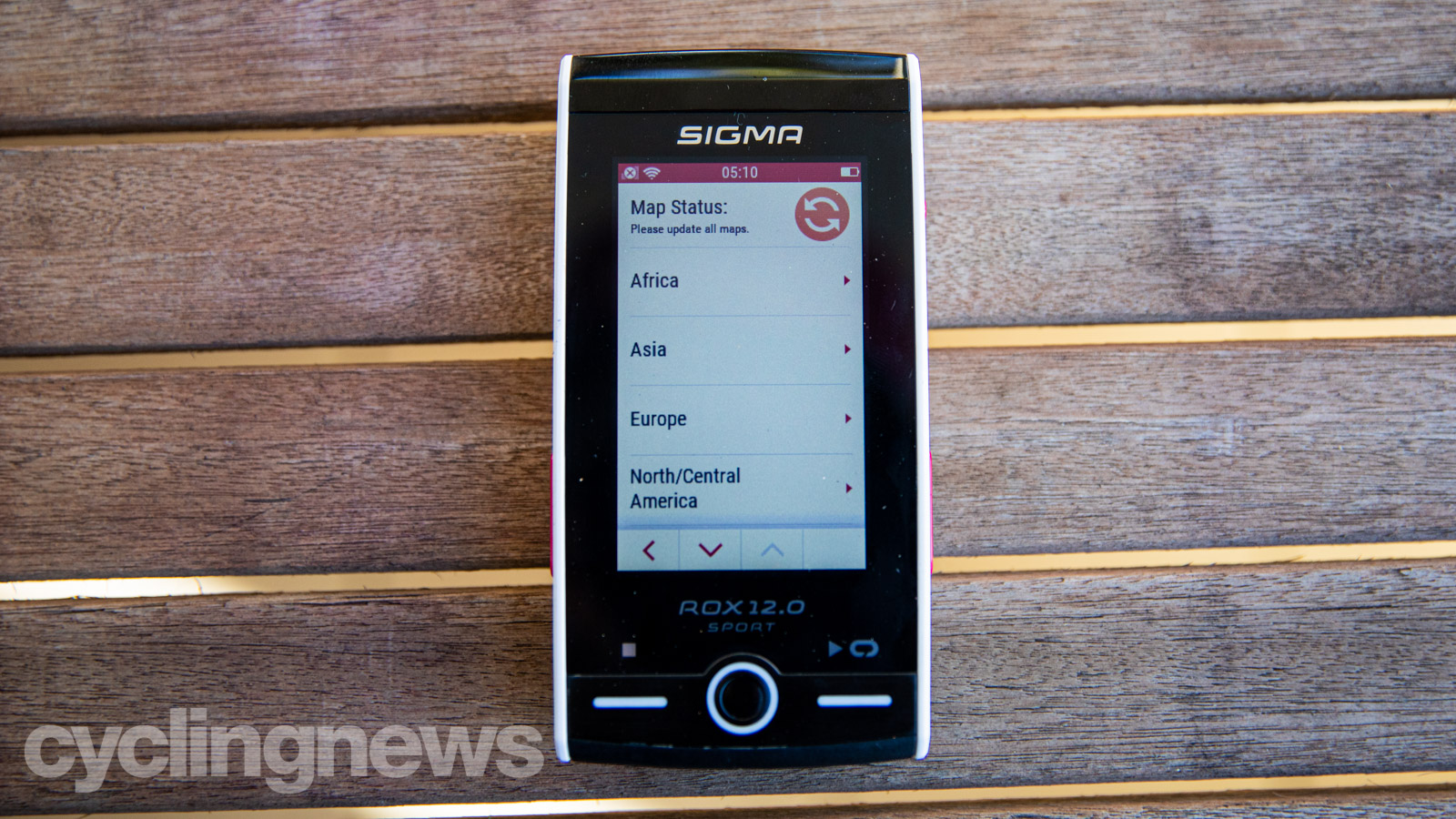
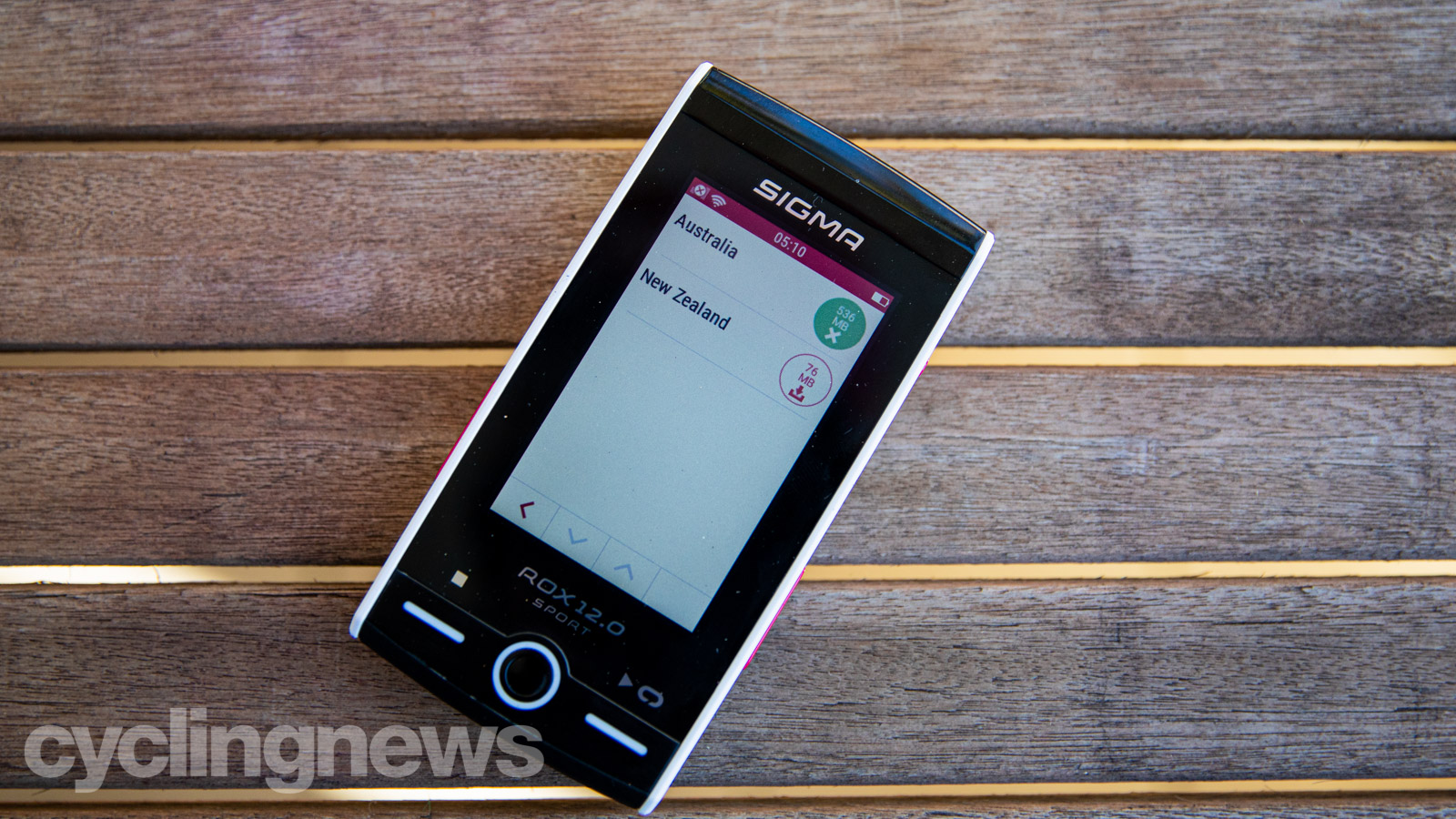
Pretty much every GPS cycling computer - bar Garmin - uses Open Street Maps, but the way the Sigma displays them is by far the most responsive of any cycling head unit I've used to date. If you see a road you've never ridden down and want to see where it goes, zoom, scroll or whatever and the computer instantly redraws the map just like your phone, there is no delay while the computer thinks.
The maps for each region are extremely detailed and updated regularly, containing not only address information but also points of interest, all searchable on the device. The routing options can be customised in the map settings menu, and can even be tailored within each sport profile, too.
I was also pleasantly surprised to find the maps show an impressive number of mountain bike trails, especially considering Sigma does not have an official partnership with Trail Forks, Mountain Bike Project or similar.
Routes can either be synced from Strava, Komoot, GPSies or Sigma Cloud, or they can be be made directly on the device by searching and address or POI, tapping a point on the map, entering GPS coordinates or by far the coolest way, drawing a rough circle with your finger. With a destination or route plugged in, the Rox 12 offers turn by turn directions and will even give you a heads up there is a turn coming if you've swiped over to a data page. The routes created on the device are on par with just about every other GPS computer. Similar to Bryton Rider 420 and the Wahoo Elemnt Roam, the computer will usually take you on the most direct route rather than the quiet side roads which are popular with cyclists.
According to Sigma, the Rox 12 will keep ticking for 16-hours on a single charge. When I ran the screen at the full, 'I don't need a light I'll just use my computer to see in the dark' screen brightness I got about 10-hours. But with a power meter and heart rate monitor connected, and the screen set to auto-brightness, in my testing, the Rox 12 seems to last for around 14-hours of ride time.
Verdict
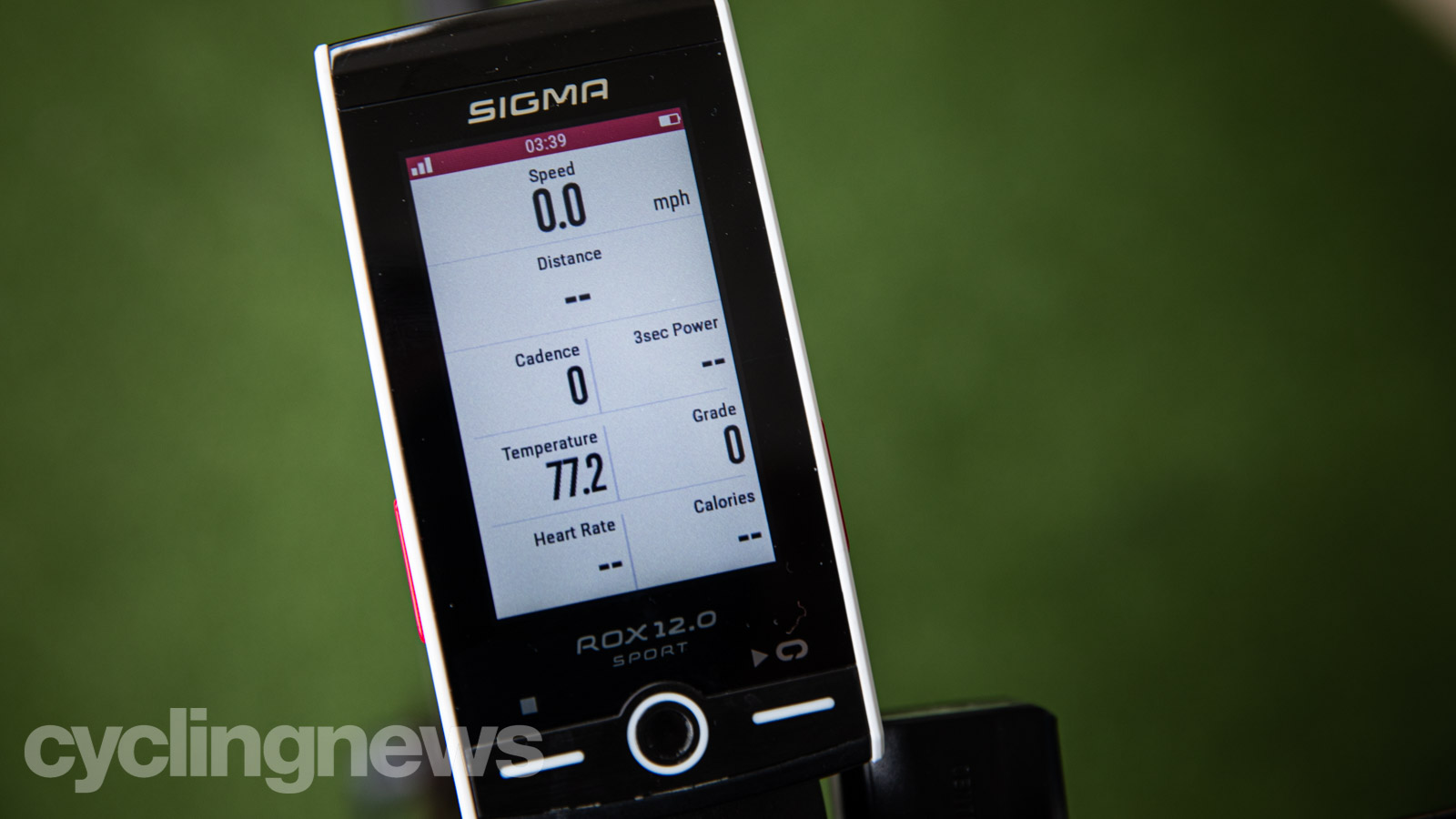
Sigma has been around for quite some time and, while their computers may have been overshadowed in recent years by offerings from the likes of Garmin, Wahoo and others, the Rox 12 is a triumphant return of sorts.
While some are likely to turn their nose up at the lack of a companion app, and the desktop app which does feel quite dated; for the average data-hungry rider, the Rox 12 provides more information than most of us how to use. With that said, I would like to see the app support opened up, to allow a bit more communication between services like TrainingPeaks.
The Rox 12 is definitely a computer for someone who appreciates robust navigation. Sigma is not alone in offering worldwide free maps, Wahoo does the same, but the Rox 12 has considerably more location information available on the device, meaning your phone can stay in your pocket.
No the Rox 12 doesn't quite offer the same connectivity and app support as some of the other high-end GPS units on the market, but most people who buy high-end Garmins or Wahoos (myself included) don't take advantage of a lot of these features.
The navigation is as close to Google Maps quality as you can get out of a cycling head unit, and the touch screen is superior to all of its competitors.
Sigma sells it as a computer alone £350 / $350 / AU$TBC or a Sport bundle with an HR strap and speed and cadence sensors at £427 / $450 / AU$TBC, it's a competitively priced, uber reliable head unit for those looking for a Garmin or Wahoo alternative.
Tech spec: Sigma Rox 12
- Price: £350 / $350 / AU$TBC
- Display: 3-inch colour display with 240x400 pixels resolution
- Actual weight: 130g
- Storage capacity: 8gb internal memory
- Water-resistant: IPX7
- Connectivity: Bluetooth, ANT+, WiFi
- Sensors: GPS, GLONASS
- Battery: USB rechargeable 16-hours
- Dimensions: 59mm x 115mm x 17 mm
Based on the Gold Coast of Australia, Colin has written tech content for cycling publication for a decade. With hundreds of buyer's guides, reviews and how-tos published in Bike Radar, Cyclingnews, Bike Perfect and Cycling Weekly, as well as in numerous publications dedicated to his other passion, skiing.
Colin was a key contributor to Cyclingnews between 2019 and 2021, during which time he helped build the site's tech coverage from the ground up. Nowadays he works full-time as the news and content editor of Flow MTB magazine.
